April 4, 2018
My father didn’t like gnocchi.
As far as I know, it is the only food he refused to eat.
It was all about the texture. Mind you, this is from a man who’s comfort food was a BIG bowl of cold mashed potatoes with buttermilk poured over top.
I understand the texture thing but for me the offending texture is slimy…like Jello (or cold mashed potatoes with buttermilk).
The next worst texture is hot cereal. It’s not as bad as Jello but it’s not a favorite. It took a long time for me to enjoy polenta because it has a texture just like hot cereal. I think my dislike for hot cereal has diminished as I’ve gotten older and I can probably now keep Jello down, which as a kid wasn’t always the case.
Click HERE to join our mailing list and you’ll never miss a recipe again!
But gnocchi? In the pantheon of foods, gnocchi reign supreme. They are my favorite food. Not to be morose, but they would be my death row meal (assuming a prison chef could make them like my mother with her pepperoni sauce!).
The pepperoni sauce is an interesting twist.
Since my father didn’t like gnocchi, we didn’t have them when he was home for dinner. My father worked out of town from time to time, so there were weeknight meals where he wasn’t around.
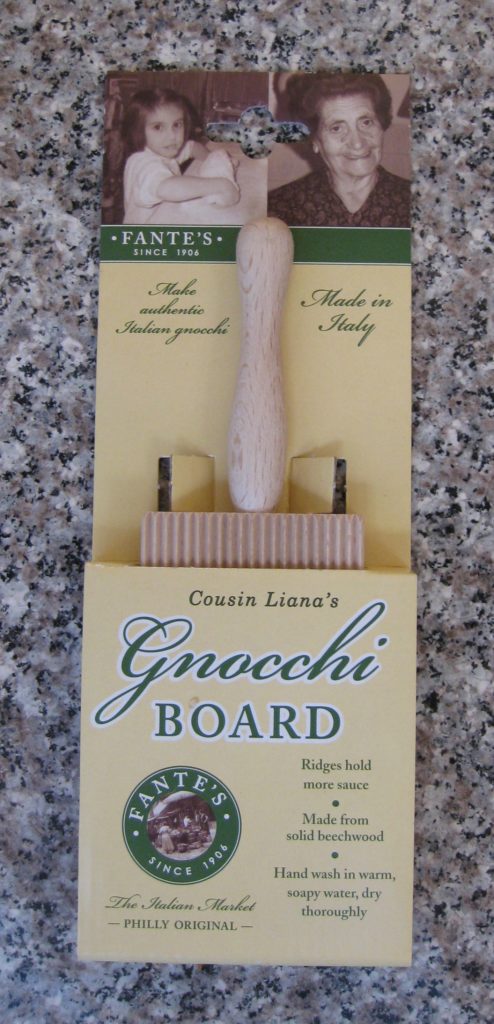
My mother would freeze her Sunday sauce, which was made with large pieces of pork. Sometimes a container of sauce wouldn’t have any meat. A common Italian approach to adding a bit of protein to a meal of pasta with red sauce is to simmer some shelled hard-boiled eggs in the sauce for a little while and serve them with the pasta.
My mother did that, but she also would take pieces of pepperoni, pierce them with a fork in a few places, boil them for about 20 minutes to render some of the fat and to soften the meat, and then add them to sauce to simmer for half-an-hour or so.
That sauce, which only appeared on weeknights from leftover Sunday sauce is my favorite sauce for my favorite food!
Follow us on your social media platform of choice
Let’s face it, pepperoni is an American creation. To be sure, it’s a riff on any number of Italian regional salame piccante (hot salami). In fact, you can’t get a pepperoni pizza in Italy but you can get a pizza with slices of salame piccante.
It took a while for our Italian relatives to wrap their heads around pepperoni. In Italian, pepperoni are peppers not a cured meat product. The word is also plural, not singular. Americans often adopt the plural form of an Italian word (whether changing the meaning or not) and then treat it like it’s singular.
Consider panini. One sandwich is panino. More than one are panini. The same is true with gnoccho and gnocchi or raviolo and ravioli. Americans tend to say paninis and raviolis (fingers on blackboard screeching sound) if they mean more than one. We don’t really have a rule about this as far as I know. It’s just random. Or so it appears to me.
Italian, on the other hand, has a very clear rule when adopting foreign words. The singular form of the word becomes the Italian word. That word is use for both the singular and the plural, with the adjective changing to indicate more than one.
Take bar, for example. The “Italian” word for bar is bar. (This is a critical bit of information that one learns early when taking Italian lessons.) If you’re going to the bar, in Italian you would say “il bar” (the bar). If you’re going out for a night of pub-crawling to many bars you would say “i bar” (the bars).
Now, you might ask yourself, when you would ever eat just one gnoccho. Gnocchi translates as dumplings. So if you had a large American or Eastern European dumpling, it would be a gnoccho, and you might have just one. Today, however, we are making small gnocchi, and one is never enough.
If you have a favorite family recipe and a bit of a story to tell, please email me at santafecook@villasentieri.com and we can discuss including it in the blog. I am expanding the scope of my blog to include traditional recipes from around the country and around the world. If you haven’t seen Bertha’s Flan or Melinda’s Drunken Prunes, take a look. They will give you an idea of what I’m looking for.
Ingredients
|
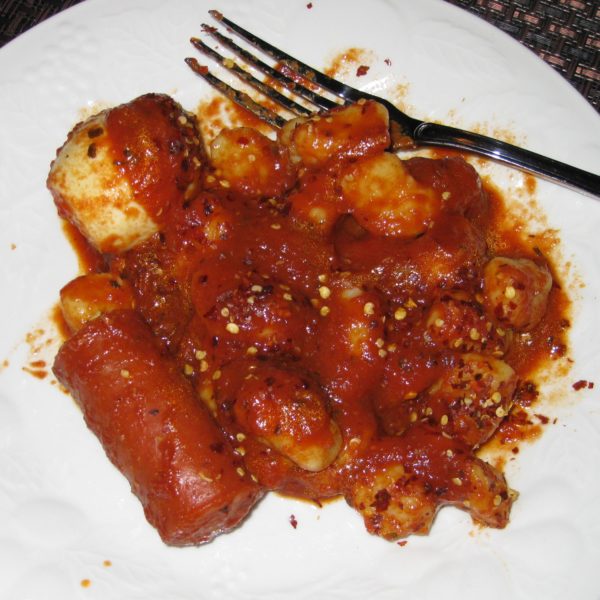
|
- Scrub the potatoes.
- Put the potatoes in a large stockpot and cover with a generous amount of cold water. Bring to a rolling boil and cook until a knife can be easily inserted, approximately 20 minutes. This will depend on the potatoes and the altitude so begin testing after about 15-17 minutes.
- Remove the potatoes from the water and allow them to cool enough to peel, about 15 minutes.
- Meanwhile, put three cups of flour on the counter or a pasta board.
- Pass the peeled, but still warm, potatoes, through a ricer on top of the flour. Note: it is very difficult to rice cold potatoes so this step should be completed as quickly as possible after the potatoes have been removed from the water.
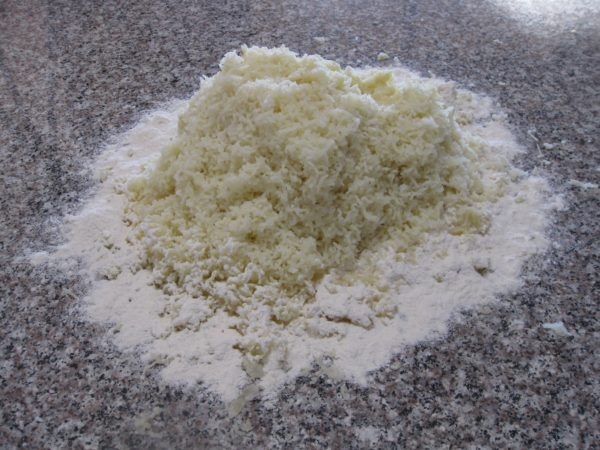
- Allow the potatoes to cool completely.
- Sprinkle the salt on the potatoes.
- Using your fingers, begin to mix in the flour.
- Add two eggs. Work in the eggs, incorporating more flour.
- Add the remaining two eggs and work in enough flour to make a dough that is just very slightly tacky. It will firm up a bit as the flour completely hydrates.
- Cut off a small piece of dough and roll it into a cylinder approximately 1/2 inch in diameter.

- After all the gnocchi have been rolled and cut bring a large pot of abundantly salted water to a rolling boil.
- Add some of the gnocchi, maybe 18-24 depending on the amount of water.
- As soon as the water returns to a full boil. Remove the gnocchi with a spider or slotted spoon.
- Put them in a serving bowl with a small amount of whatever sauce you are using on the bottom.
- Add more gnocchi to the boiling water.
- Meanwhile drizzle a bit more sauce on the gnocchi in the bowl and sprinkle with a bit of Parmigiano Reggiano cheese, if desired.
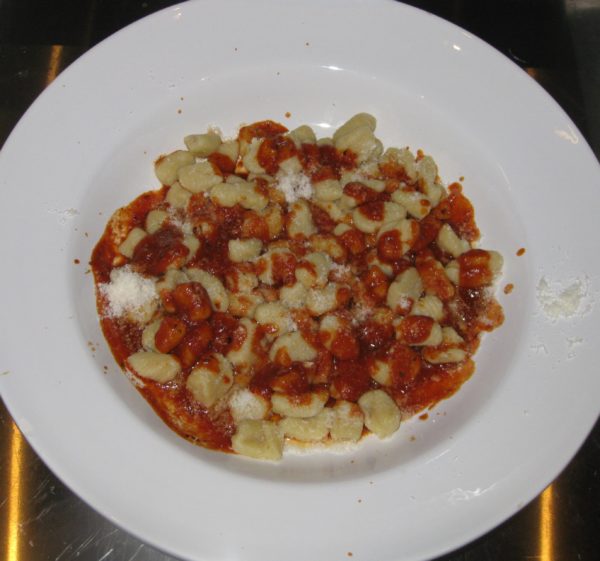
- Add each batch of gnocchi to the serving bowl, keeping it warm in a low oven and sprinkling each later with some sauce (and cheese, if desired).
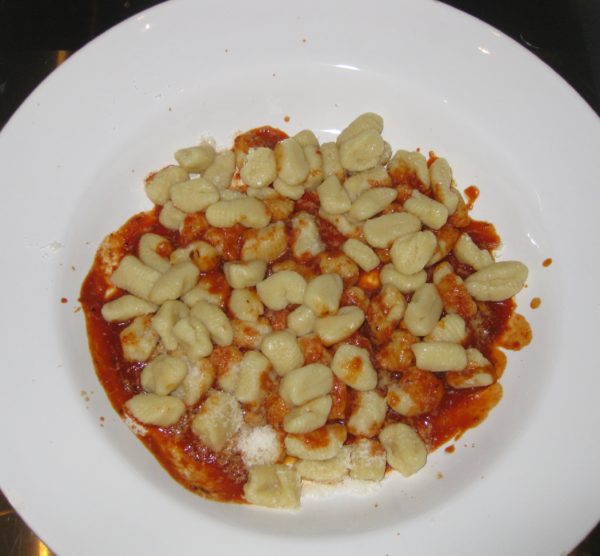
- Once all the gnocchi have been added, gently stir the gnocchi to distribute the sauce and cheese.
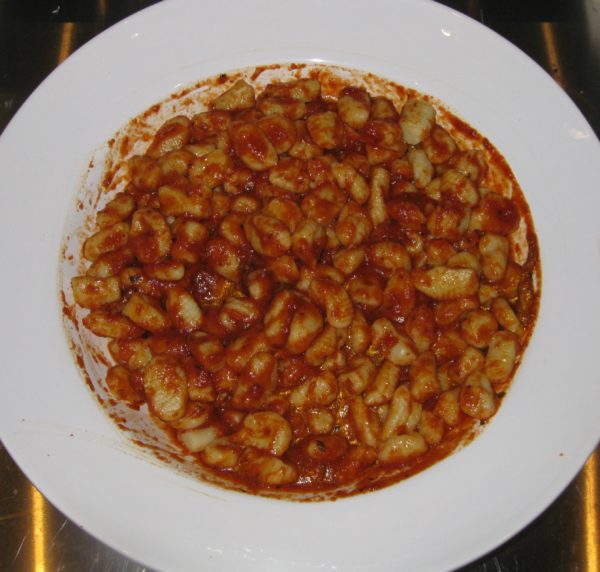
- Serve immediately.
Copyright © 2018 by VillaSentieri.com. All rights reserved.
|
|

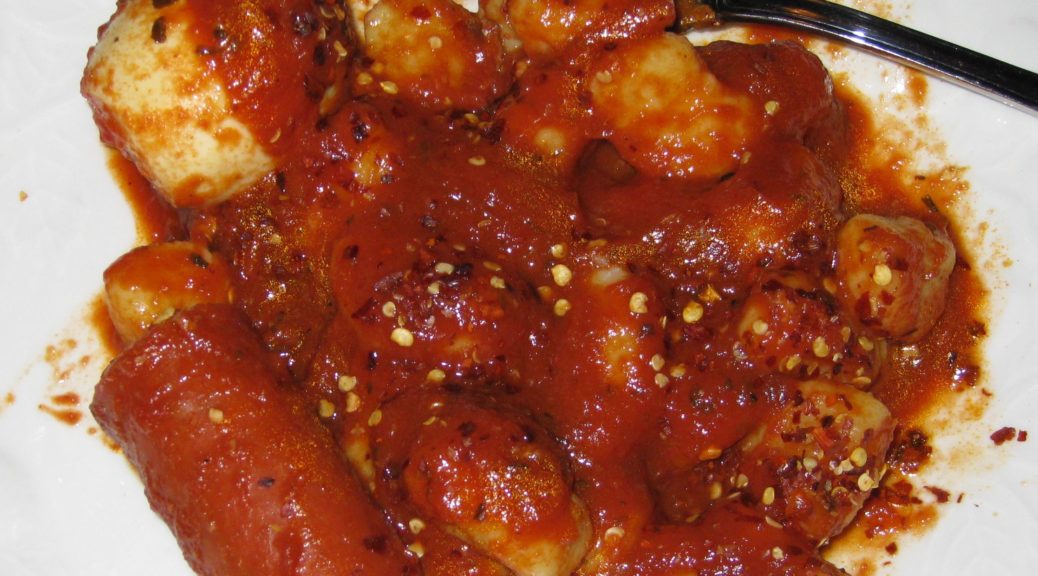
Who could not love gnocchi? My grandmother made wonderful, firm, but relatively light gnocchi, and the only difference with your recipe is that she baked, rather than boiling the potatoes. She claimed that this reduced the amount of water in them making them firm but light. The next time we have a mass quantity pasta making day, I say we make some gnocchi!
I was thinking about discussing the option to bake the potatoes but omitted it to reduce the length of the post. Thanks for the input!